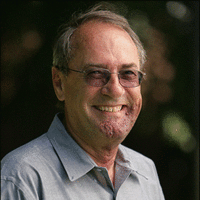The ability to include models as submodels inside other models.
Event
Embedded Systems Week
 Submitted by Anne Dyson on April 16th, 2012
Submitted by Anne Dyson on April 16th, 2012
The main focus of DANCE is on the topic of making design and implementation expert knowledge available to distributed real time embedded systems (DRTES) engineering processes. Special emphasis will be devoted to promote discussion and interaction between researchers and practitioners focused on the particularly challenging task to efficiently integrate dependability and reconfiguration solutions within the restricted available design space and time.
 Submitted by Anne Dyson on April 16th, 2012
Submitted by Anne Dyson on April 16th, 2012
The NASA Formal Methods Symposium is a forum for theoreticians andpractitioners from academia, industry, and government, with the goals ofidentifying challenges and providing solutions to achieving assurancein mission- and safety-critical systems. Within NASA, for example, suchsystems include autonomous robots, separation assurance algorithms for aircraft,Next Generation Air Transportation (NextGen), and autonomous rendezvous anddocking for spacecraft. Moreover, emerging paradigms such as code generation
 Submitted by Alwyn Goodloe on April 16th, 2012
Submitted by Alwyn Goodloe on April 16th, 2012
RTAS 2012 focuses on original systems and applications, case studies, methodologies and applied algorithms that contribute to the state of practice in the broad field of embedded and open real-time systems and computing. The scope of RTAS 2012 will consist of four tracks: Applications, Systems, RTOSs and Tools, Applied Methodologies and Foundations, Hardware/Software Integration and Co-design, and Wireless Sensor Networks.
 Submitted by Janos Sztipanovits on April 16th, 2012
Submitted by Janos Sztipanovits on April 16th, 2012
Event
SenSys 2011
The 9th ACM Conference on Embedded Networked Sensor Systems (SenSys 2011) is a highly selective, single-track forum for the presentation of research results on systems issues in the area of embedded, networked sensors. Distributed systems based on networked sensors and actuators with embedded computation capabilities allow for an instrumentation of the physical world at an unprecedented scale and density, thus enabling a new generation of monitoring and control applications.
 Submitted by Janos Sztipanovits on April 16th, 2012
Submitted by Janos Sztipanovits on April 16th, 2012
Event
The 4th Workshop on Compositional Theory and Technology for Real-Time Embedded Systems (CRTS 2012)
The increasing complexity of real‐time embedded systems requires advanced methodologies that can reduce the cost of their design and analysis, while ensuring that requirements on functional correctness, real‐ time behaviour, and performance are met. Compositional theories and technologies facilitate the decomposition of a complex system into components, as well as their integration via interfaces. Component interfaces hide the internal details of the components, thereby reducing integration complexity.
 Submitted by Janos Sztipanovits on April 16th, 2012
Submitted by Janos Sztipanovits on April 16th, 2012
The goal of this two-day, single-track event is to expose researchers to control and modeling challenges in cyber-physical systems (CPS) with the aim of exchanging knowledge and fostering collaborations between academia, industry, and government agencies. The proposed symposium will cover several applications of cyber-physical systems such as networked systems of unmanned vehicles, power grids, green buildings, transportation systems and health-care systems via invited talks, poster presentations and a panel discussion.
Submitted by Quanyan Zhu on April 16th, 2012
Event
ESWEEK 2011
Embedded Systems Week is an exciting event which brings together conferences, tutorials, and workshops centered on various aspects of embedded systems research and development. Three leading conferences in the area - CASES, CODES+ISSS, and EMSOFT - will take place at the same time and location, allowing attendees to benefit from a wide range of topics covered by these conferences and their associated tutorials and workshops.
 Submitted by Janos Sztipanovits on April 16th, 2012
Submitted by Janos Sztipanovits on April 16th, 2012
This session focuses on methods and design tools for the exploration, analysis, simulation, selection, synthesis, and optimization of E/E automotive architectures (e.g., software, hardware, communication, wiring harness, and power architectures). These methods and tools apply to technologies such as multi-core processors, distributed systems, AUTOSAR, Flexray, CAN, Ethernet, and DSRC among others. The methods and tools are usually (but not limited to) model-based.
Submitted by Anonymous on April 16th, 2012
Event
WFCD'10
WFCD - Foundations and Applications of Component-based Design 2010
The workshop aims to discuss recent results on component-based design with emphasis on design frameworks for real-time systems encompassing heterogeneous composition and models of computation. The focus is not only on fundamental results but also on their implementation in methods and tools and their concrete application in areas such as automotive, avionics, consumer electronics and automation.
 Submitted by Chris vanBuskirk on April 16th, 2012
Submitted by Chris vanBuskirk on April 16th, 2012
Feedback
Feedback
If you experience a bug or would like to see an addition or change on the current page, feel free to leave us a message.